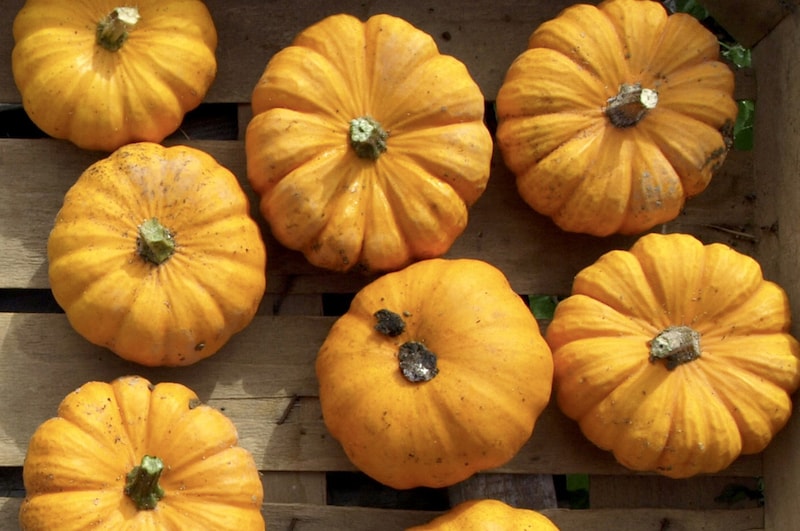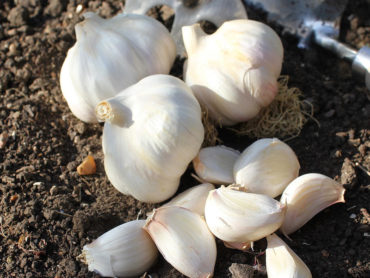Pumpkins and winter squashes are traditional favourites which are delicious roasted, baked or made into comforting winter soups. If you’d like to grow these big, bright gourds at home, here’s everything you need to know to sow and care for your pumpkins ready for Halloween and beyond.
If you’re looking for new and unusual varieties to try, browse our selection of squash and pumpkin seeds. Run out of time to sow seeds? Catch up by ordering a few butternut squash or pumpkin plants when they’re available.
How to sow pumpkin and winter squash seeds
Sow your pumpkin and squash seeds indoors in April. Use small pots and slip the large, flat seeds into the soil on their edge to a depth of about 1cm (½”).
If you’re direct sowing outdoors, do so in late May or early June, popping the seeds into 2.5cm (1”) holes in pairs or threes and covering them with a cloche. When the seeds germinate, select the strongest seedlings and discard the rest.
When to plant out pumpkin seedlings
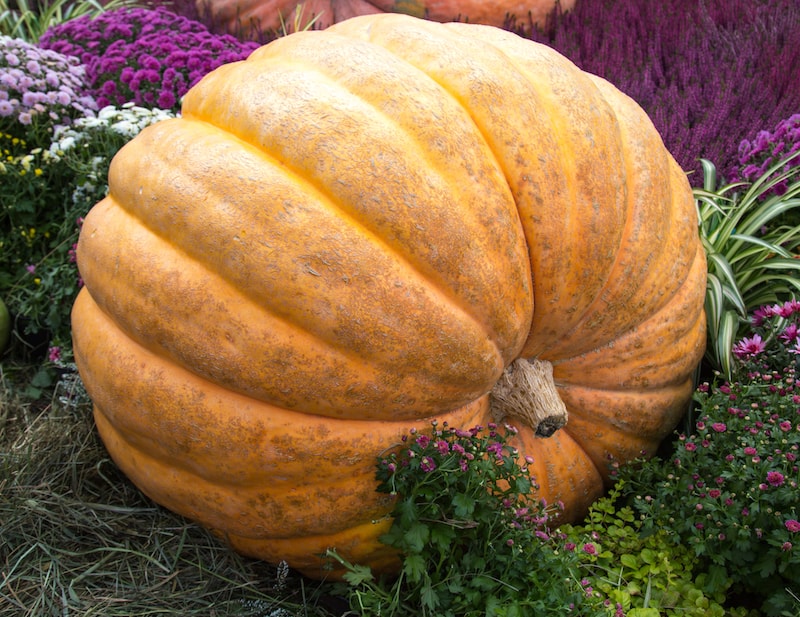
Image: Pumpkin Seeds ‘Atlantic Giant’ from Suttons
Begin planting out your indoor-raised plants from May onwards, depending on the weather conditions. Always harden off your young plants over a period of a week to 10 days before placing them into their final positions. You should choose a sunny spot for your pumpkins and squashes and do bear in mind that they need a lot of space – ideally, you should leave up to 2m (6ft) between plants.
Pumpkins and winter squashes love muck, so make sure you prepare the ground they’re going into by digging in lots of well-rotted manure or compost. They also require plentiful watering. To make life easier, dig a hole next to your plant and sink a 15cm (6”) plant pot into it. When you water, simply fill the pot to ensure the roots get lots to drink while avoiding drenching the base of the plant which can sometimes cause rot.
When the fruit starts to swell, introduce a feed every couple of weeks – tomato fertiliser is perfect. Do try to keep the developing pumpkins and squashes clear of the damp soil – try slipping old tiles or slates under them or, alternatively, use an old house brick or a handful of straw.
When to harvest pumpkins
Allow the fruit to colour nicely and the skins to firm up before harvesting. You can tell if pumpkins and squashes are fully ready because the stem will begin to turn yellow. Cut the fruit from the vine leaving about 2.5cm (1”) of the stem in place – avoid breaking the fruit away from the vine because this can provide an entry point for bacteria and rot.
Place your harvest in the sunshine or in a greenhouse or conservatory for a few days to allow the skins to harden or ‘cure’. Then move your gourds somewhere cool and airy where they can be stored for up to a few months. Storing your pumpkins and squashes is actually a good idea. Read our article on why it might be best not to eat squash fresh for more information.
Best varieties of pumpkin
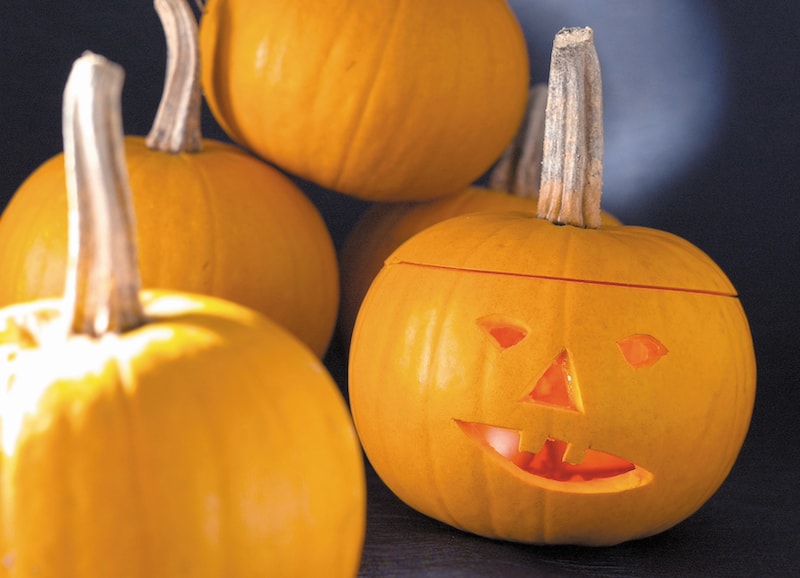
Image: Pumpkin Seeds – F1 Becky from Suttons
Pumpkins and winter squash are packed with vitamins A, B, C and E and are also a good source of potassium. Healthy as well as being tasty, they’re an excellent carrier of flavour and work well with chilli, onion, garlic, ginger, cinnamon, coriander, rocket, apples, walnuts and nutmeg.
Pumpkins like ‘Becky F1’ are high-yielding and delicious, meaning you should end up with plenty of fruit for Halloween lanterns and homemade soups to keep you warm on bonfire night. Smaller varieties like Pumpkin ‘Amazonka’ are especially good for cooking and have a sweet, nutty flavour.
The larger varieties like Pumpkin ‘Hundredweight’ make good lanterns and are also great for salads, pickles, chutneys and jams. When hollowing out your pumpkin make sure you save the seeds. Drizzled with olive oil and roasted they make a healthy and tasty snack. Pumpkin seeds also add a lovely nutty taste to homemade bread.
Best varieties of winter squash
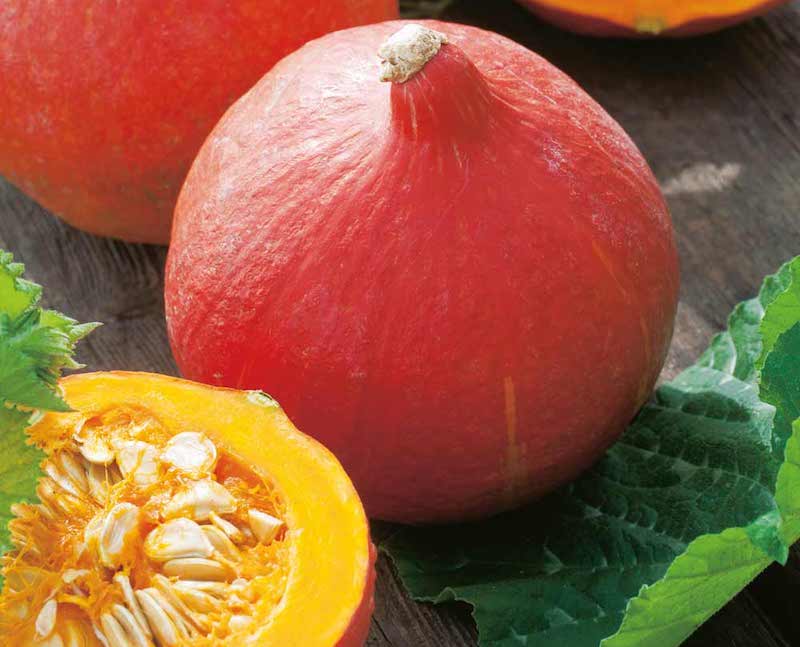
Copyright: Floramedia
Stuffed squashes and flavoursome soups are perennial favourites, but squashes can also be used in baking. Pull out your favourite carrot cake recipe and simply switch out the carrot for raw, grated squash.
As a savoury ingredient, try sausages and squash mash. Halve your squash horizontally, scoop out the seeds and rub the inside with olive oil. Sprinkle inside each half some dried chilli, chopped garlic and nutmeg, add a knob of butter and roast. When ready, scoop out the flesh, bash it with a fork to break up any lumps, and serve with good quality sausages. Delicious.
Sweet, nutty and bearing fruits that weigh up to a hefty 1.5kg, Squash ‘Uchiki Kuri’ is well worth a try. Or if you’re after something that keeps well, Squash ‘Tahiti Melon’ is one of the original butternut squashes rediscovered in California in the late seventies. At 5-10kg, it’s a big variety with a long neck for added flesh.
Winter squashes and pumpkins are something to look forward to and well worth the space it takes to grow them. Looking for a recipe for pumpkin pie or butternut squash chutney? Check out our squash and pumpkin recipes for full cooking instructions.
Lead image: Pumpkin (Organic) Seeds ‘Jack Be Little’ from Suttons

